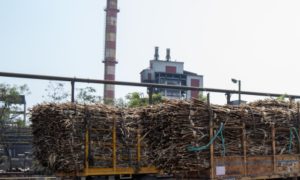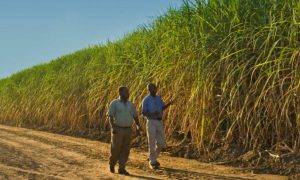Sugarcane is a sustainable aviation fuel option

The South African Sugar Association (SASA) has released its first quarterly diversification report, highlighting three key areas: biofuels, bioplastics, and co-generation. The report focuses on sustainable aviation fuel (SAF) as a promising avenue for industry diversification, with potential to reduce aviation fuel greenhouse gas emissions. Surplus sugarcane could be diverted to produce 700 million liters of low-carbon ethanol, yielding 433 million liters of SAF. Government support and regulatory frameworks are crucial for success. The industry’s commitment to innovation and sustainability positions it to lead in the emerging SAF market.
THE SA Sugar Association published a Diversification Report in February 2024. It is the first in a series of quarterly reports that SASA will publish to keep stakeholders updated on the industry’s diversification strategy.
Three specific areas of diversification have been identified: biofuels, specifically sustainable aviation fuel (SAF), PLA as a form of bioplastic and co-generation to export additional power to the grid.
In the report, the SAF project steering committee chair Dr Thomas Funke explains that burning jet fuel accounts for over 95% of an airline’s total carbon emissions, so there is an urgent need for innovative solutions to address this. Sustainable Aviation Fuel (SAF) is emerging as a promising avenue for the industry to diversify and contribute significantly to the aviation industry’s sustainability goals.
In the article, Funke says that surplus sugarcane offers an alternative use for potentially diverting 50% of the country’s annual sugarcane production to ethanol production. This could produce 700 million litres of low-carbon ethanol, followed by 433 million litres of SAF, a critical component in reducing aviation fuel greenhouse gas (GHG) emissions.
“The production of sugarcane-based SAF will require some critical government support, namely an enabling regulatory framework, support for small-scale producers and the essential steps to make the switch to SAF feedstock feasible. Embracing SAF production represents a strategic opportunity for our sector, contributing to environmental sustainability and fostering economic growth and resilience in a rapidly evolving global market.
“The industry’s pivotal role in the economy and commitment to innovation and sustainability can position it as a leader in the emerging SAF market. The first step has been for the sector to engage the Roundtable on Sustainable Biomaterials (RSB), which has set out specific social and environmental sustainability principles for biofuel production (the RSB Standard). This framework also ensures that the crops (i.e. sugarcane) are grown socially responsibly and do not threaten food security.
“The RSB supports efforts to transition to a sustainable bioeconomy by providing expertise and technical advice on best practices for sustainability. A collaboration between the SA Canegrowers’ Association (SACGA) and the RSB highlights SAF’s potential to meet corporate policy mandates, industry objectives and consumer concerns. Known as a “drop-in” fuel, SAF can be blended seamlessly with conventional jet fuel, requiring no infrastructure changes, and is certified as environmentally and socially sustainable,” said Funke.
Source Link : https://kznindustrialnews.co.za/sugarcane-is-a-sustainable-aviation-fuel-option/














